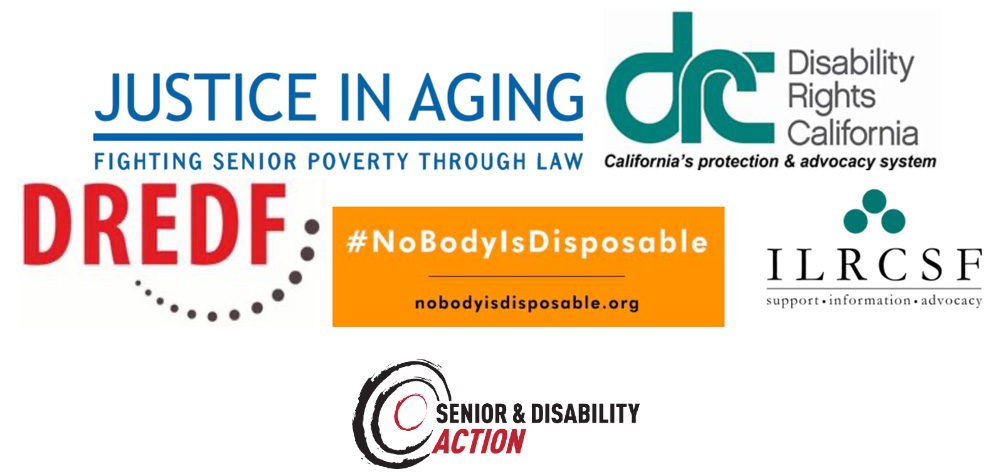

On June 9, 2020, the California Department of Public Health released its revised “Crisis Care Guidelines” for COVID-19. These guidelines apply if and when there are so many critically ill COVID patients who need intensive care that there may not be enough staff and equipment to treat everyone. The recommended protocols include rules for deciding who gets prioritized for care when medical resources are scarce.
California’s prior draft guidelines published April 19, 2020 adopted a point system that directed scarce resources to younger people, those thought to have longer life expectancies, and individuals without certain pre-existing medical conditions. More than 60 community and advocacy organizations representing millions of Californians opposed the earlier policy because it discriminated against people of color, disabled people, higher weight people, and older adults.
California’s revised policy responds to many of the concerns raised by advocates, and is far more aligned with a California for All.
Nondiscrimination and reasonable modifications.
California’s new guidelines emphasize equality and nondiscrimination across many populations:
Healthcare decisions, including allocation of scarce resources, cannot be based on age, race, disability (including weight-related disabilities and chronic medical conditions), gender, sexual orientation, gender identity, ethnicity (including national origin and language spoken), ability to pay, weight/size, socioeconomic status, insurance status, perceived self-worth, perceived quality of life, immigration status, incarceration status, homelessness, or past or future use of resources.
California SARS-CoV-2 Pandemic Crisis Care Guidelines at 5 (“Key Points About Crisis Care”); see also 10, 16, 21, 23, 24, 25, 26, 27 (reiterating commitment to nondiscrimination based on populations listed in “Key Points”).
The guidelines direct health care providers to make reasonable modifications for older and disabled patients. Id. at 12, 16, 17. As detailed in the document, these include:
- Modifications to COVID-19 visitor limitations to permit a disabled or older patient to bring a family member, personal care attendant, communicator, or other helper to the hospital with them. Id. at 12.
- Effective communication for people with disabilities including people who are deaf, people with non-verbal language, people with I/DD, and people with Alzheimer’s or another form of dementia. Id.
- Modifications to ensure equal treatment in triage and allocation decisions. These may include adjustments to triage scoring, and longer ventilator trials, to account for pre-existing disabilities. Id. at 16, 26, 28.
The guidelines direct hospitals to ensure that they have an appointed Disability Accommodations Specialist or ombudsperson with the responsibility and authority to ensure that needed accommodations are provided. Id. The document also notes that health care providers have an obligation under law to provide interpreter services to people with limited English proficiency. Id. at 17.
The document reminds health care providers that “[d]uring triage situations, facilities and providers are still subject to federal and state anti-discrimination laws.” Id. at 14.
Steps to avoid rationing.
The document describes the steps that health care providers should take to avoid rationing, including obtaining more supplies and equipment, coordinating with regional partners (including across competing hospital systems), and expanding capacity by exploring alternatives such as non-invasive ventilation and splitting ventilators. Id. at 7-8, 11.
Given the understandable fears of at-risk and vulnerable communities in California, it is valuable to reiterate that, to date, there are no published accounts in the U.S. of health care providers denying ventilators to COVID-19 patients due to rationing. At the height of the March and April 2020 COVID surge in New York, clinicians avoided ventilator rationing and treated all patients by, in some cases, splitting ventilators and adapting BiPap machines.
No reallocation of personal ventilators.
The guidelines make clear that personal ventilators used on a regular basis by disabled patients cannot be reallocated to other patients who are perceived to have a better chance to survive. Id. at 20.
Nondiscriminatory triage.
In its primary triage framework, the new California guidelines commit to a single principle of saving the most lives, the principle endorsed by community advocates. Id. at 20. The revised guidelines continue to recommend clinicians use the patient’s SOFA (Sequential Organ Failure Assessment) score, a six-variable tool for medically assessing how likely a patient is to survive in the immediate short term, to assign patients to one of four priority groups for triage. However, clinicians are also directed to adjust the scores in specific ways to ensure that disabled people are assigned to the correct triage group, and are not unfairly disadvantaged on the basis of their disability.
Triage tiebreakers.
In cases where there are insufficient scarce resources for every person in the same priority group for triage, the guidelines permit clinicians to assess whether any patient has a severe life-limiting condition likely to cause death in the near term, such as a person with metastatic cancer who is expected to die within six months even with treatment. Scarce resources are then allocated to the person without such a life-limiting condition. Id. at 27-28. The short list of severe life-limiting conditions is intended to curtail assumptions about the range of health conditions that could be used as a “tie-breaking” factor, and community advocates and organizations have worked to make the list as narrow as possible, including specifying a short time frame of six months’ life expectancy.
If after consideration of severe life-limiting conditions a tie breaker is still needed, the guidelines advise using a lottery as a nondiscriminatory means for allocating scarce resources.

